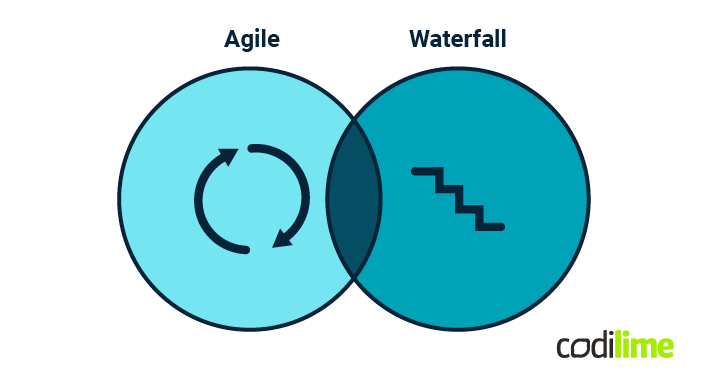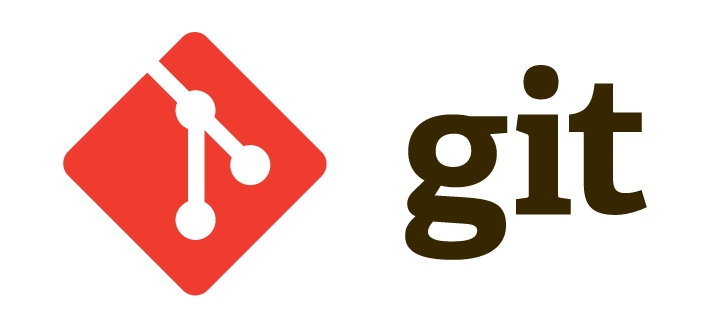Software development has become an increasingly important aspect of modern business, with companies relying heavily on technology to stay competitive. These software development best practices can help you ensure that your software is developed efficiently, effectively, and to a high standard of quality.
Establishing best practices can help developers avoid common pitfalls and deliver software that meets the needs of users and stakeholders. In this article, we will explore some of the most important software development best practices, including project management methodologies, coding standards, testing strategies, and more.
Whether you are a software developer, project manager, or business leader, understanding and implementing software development best practices can help you achieve better outcomes and improve your overall software development process.
1. Define your project requirements clearly
Project requirements are the foundation of successful software development. They outline the scope, objectives, and goals of a project, as well as the functionality, features, and design of the software application that will be developed. Project requirements serve as a guide for software engineers, designers, and stakeholders, ensuring that everyone is on the same page and working towards a common goal.
Well-written project requirements are essential in software development and requirement engineering because they help minimize development costs, improve time management, enhance collaboration, and ensure quality. Without clear requirements, software development projects can become directionless, unfocused, and prone to delays and cost overruns. Therefore, it's critical to invest time and effort in defining and refining project requirements to align with software development best practices.
Project requirements may evolve over time as your project matures. In most cases, they should. Clear, up-to-date project requirements will greatly improve communication with stakeholders.
Are you launching a new software project? If yes, check out our software development services for startups.
2. Choose the right methodology
Agile software development
Agile development is a software development approach that emphasizes collaboration, flexibility, and continuous improvement throughout the software development process. It involves breaking the software project down into smaller, more manageable parts and using iterative and incremental approaches to develop and deliver the software. Agile development aims to provide high-quality software that meets the needs of stakeholders while minimizing risk and maximizing business value in each iteration.
The plan-do-check-act cycle ensures that iterations adapt to changing project conditions. Iterations can be driven by time (the scrum framework enforces constant iteration time) or by goals that add subsequent functionalities to the final product.
One of the main benefits of agile development is its ability to adapt to changing requirements and priorities. Because agile development involves working in short iterations, teams can respond quickly to feedback and make necessary changes. This makes it easier to ensure that the final product meets the needs of customers and stakeholders.
Another benefit of agile development is its focus on continuous improvement. By regularly reviewing and evaluating the development process, teams can identify areas for improvement and make adjustments to increase efficiency and effectiveness. This helps to ensure that the development process remains flexible and responsive to changing needs and requirements.
Overall, agile development is a popular approach to software development best practice because it allows teams to work collaboratively, respond quickly to changing requirements, and deliver high-quality software that meets the needs of customers and stakeholders. By using an agile approach, teams can increase their chances of project success.

Waterfall software development
Waterfall development is a traditional approach that follows a linear and sequential process. It consists of several phases, including requirements gathering, design, implementation, testing, deployment, and maintenance. Each phase of the project must be completed before moving on to the next one, and once a phase is completed, it can’t be revisited. The name "waterfall" comes from how the model flows from one phase to the next, like a waterfall.
In some situations, the waterfall model is good for project success because it provides a clear understanding of project requirements, well-defined deliverables, and strict deadlines. It works best when the software project requirements are well-understood and rarely change during the project lifecycle. It also works well for projects where the end product is clearly defined and well-understood by all stakeholders.
However, the waterfall model has some disadvantages as well. For instance, it can be inflexible and may not work well when the project requirements are not well understood or frequently change during the project lifecycle. Any mistakes in the project planning phase will significantly impact the overall project timeline and budget. Make sure you choose the best software development practices according to your needs.
If you are interested in other SDLC methodologies, check out this article.
3. Remember about testing
Testing is a core part of software development, and following best practices can help ensure the quality and reliability of the software being developed. Here are some best practices for testing:
- Plan testing activities ahead of time, including what needs to be tested, how it will be tested, and what tools and resources are needed. This will help ensure that testing is thorough and efficient.
- Write clear test cases - Write clear and concise test cases that are easy to understand and follow. Include the expected results and any preconditions that need to be met before the test can be executed.
- Use automated testing tools to automate repetitive and time-consuming testing tasks. Test automation services will help save time and increase the accuracy and reliability of the testing process.
- Test early and often throughout the development process to catch defects and issues early on when they are easier and less expensive to fix.
- Test in different environments, such as different browsers, operating systems, and devices, to ensure that the software works properly in a variety of scenarios.
- Test multiple aspects of your software by functional testing, performance testing, security testing, and usability testing to cover all aspects of the software architecture being developed.
- Involve stakeholders, such as software developers, testers, project managers, and customers, in a proper testing scenario to ensure that all requirements and expectations are met.
- Record and track defects found during testing with a defect-tracking system. This will help ensure that defects are properly documented, prioritized, and addressed.
- Re-test fixed defects to ensure that the fix has resolved the issue permanently and that there are no unintended side effects of new changes.
- Implement continuous integration and continuous testing to automate the testing process and catch defects as soon as they are introduced.
Following these testing best practices can help ensure that software is tested thoroughly and effectively, leading to higher quality and more reliable software.
4. Manage changes with a version control system
Version control is the practice of managing changes to code, documents, or any other data over time. It enables software developers to track changes to their code and collaborate with others better. With version control, developers can create branches to work on new features or fixes without affecting the main code branch.

It also allows for easy identification and resolution of conflicts that may arise when multiple people are simultaneously working on the same software code. Version control systems, such as Git and SVN, are widely used in the software industry and are useful tools for any development team.
5. YAGNI for software developers
YAGNI stands for "You Ain't Gonna Need It". It is a principle in software development that suggests you should only implement a feature or functionality once it is necessary.
The YAGNI principle is based on the idea that adding unnecessary functionality to software can cause several problems, such as making the code harder to understand, test, and maintain and potentially introducing bugs. By only implementing the features that are needed at the current time, developers can reduce complexity, increase flexibility, and deliver software that is easier to maintain and evolve.
The YAGNI principle advises against implementing features that still need to be added to keep the software as simple and maintainable as possible.
6. Track your issues
Employing an issue tracker might benefit your software development process. An issue tracker helps to manage and organize software development tasks, bugs, and feature requests throughout the stages of the SDLC.
It allows developers to prioritize issues based on severity, assign them to the right team members, and keep track of their progress. Using this tool enables developers to identify and fix issues more efficiently, to better manage risk in software development to avoid missing critical bugs and ensuring that the software is of high quality.
It also allows team members to track the progress of a project and see who is responsible for which tasks. This promotes transparency and accountability within the team, which helps to build trust and fosters a collaborative environment. Overall, this is a vital tool for any software development team, and it can significantly enhance the quality and efficiency of software development.
7. Don’t forget about code reviews
Reviewing code is a key part of the software development process. It involves examining someone else's code to identify potential issues or improvement areas. A code review aims to ensure that the code quality meets best practices and aligns with the project's requirements. Other key benefits are easy knowledge sharing, improved code consistency, and catching potential issues early. On the other hand, code reviews can harm throughput in fast-paced projects.
Code reviews can be performed manually or with the help of automated tools, and they can involve multiple team members. A thorough code review can catch bugs, enhance code readability, and lead to better overall software quality.
8. Prevent threats - sandboxing
Sandboxing is a practice in software development that involves running code in an isolated environment, separate from the rest of the system. The goal of sandboxing is to prevent software from accessing resources that it shouldn't and to limit the potential impact of bugs or vulnerabilities.
By creating a safe environment for testing and debugging software, developers can catch issues early on and prevent them from causing more extensive problems. Many tools are available for sandboxing, from containerization platforms like Docker and Kubernetes to virtualization platforms like VirtualBox and Vagrant.
By incorporating sandboxing into their development process, teams can improve the quality and security of their software, reduce the risk of downtime or data loss, and ultimately deliver a better product to their users. Remember that each project has its specific needs regarding such environments.
9. Design-first approach
Designing before coding is crucial because it helps to ensure that the final product meets the desired objectives and functions efficiently. Designing involves planning and organizing the features and functionality of the software or application. It allows the development team to identify potential problems, visualize the end product, and ensure that all the requirements are met. By clearly understanding the problem and the desired outcome, designers can identify potential pitfalls and come up with solutions that will ensure a smoother development process.
Additionally, having a solid product design plan in place before coding begins can save time, resources and prevent costly mistakes. Ultimately, designing before coding ensures that the final product is user-friendly, functional, and meets the desired objectives.
Conclusion
Software development best practices are crucial for creating high-quality, reliable, and maintainable software products. By following and adapting established standards, processes, and guidelines, developers can improve the efficiency of their workflows, reduce errors, enhance collaboration, and deliver better results.
By adopting these software engineering best practices and continuously refining them, software development teams can create software products that meet the needs and expectations of users while staying within budget, time, and quality constraints.








